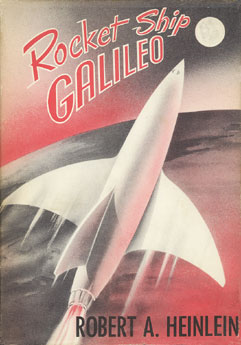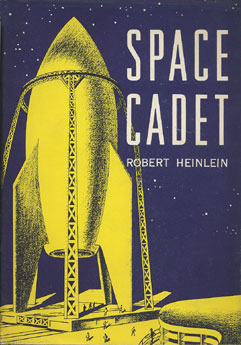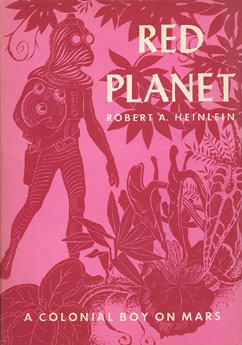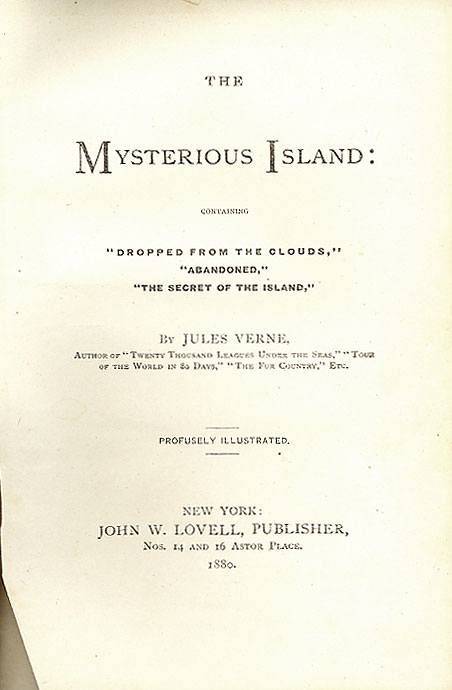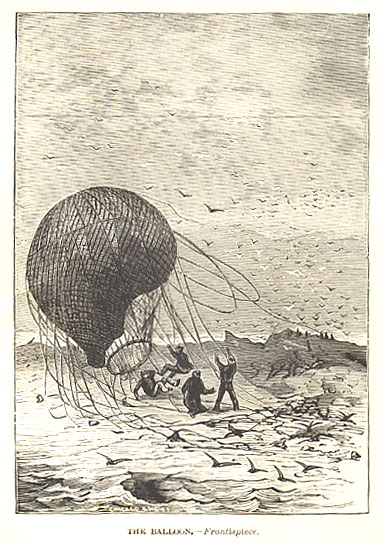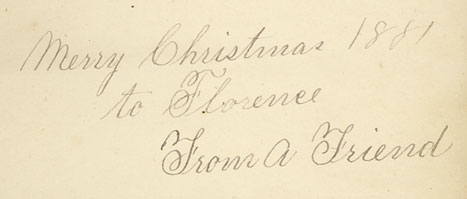Welcome To Roger Russell's
Science Fiction Fun Page
A personal diary into the world of
science fiction
These
pages are copyrighted.
No portion of this site may be reproduced in whole or in part
without written permission of the author.

Please remember that the opinions expressed here are my own.
|
My apologies to non-carbon based life forms that have found my page and not been acknowledged. Of course, it's egocentric to assume there is only one kind of life form in the universe. If you have a different basis, I would be interested to know more about it. |
![]()
|
|
|
What's on this page? |
|
|
Do you recognize this? |
|
|
|
What's the difference? First, we must define the terms. Here's what some of the experts have said. |
|
|
|
My experiences in science fiction began in the 1940's. |
|
|
|
A list of favorite authors and their stories. |
|
|
|
A list of favorite movies and the year they appeared. |
|
|
|
All about the first science fiction movie I saw in 1943. Lots of pictures. Articles, pictures and model kits plus the creation of the unique war machine design. |
|
|
Excerpts from one of the most imaginative animated science fiction films. Excerpts from one of my favorite stories later made into a movie. Research on the author and “The Day of the Triffids” plus other books that he wrote. A tribute to a science fiction artist, writer, publisher and friend. The movie with pictures and descriptions. |
![]()
|
|
A section on science fiction author A. E. Van Vogt and an extensive list of stories that he wrote. Find out how general semantics is connected with him, McIntosh Lab and Roger Russell. |
|
|
|
Some elementary thoughts on the complicated subject of time travel. Another approach involving wormholes, parallel universes and avoiding time paradoxes may be a more realistic approach. Two books from my collection that are over 100 years old. SF art and a few movie posters Anyone remember this? |
|
|
|
Links to other science fiction related pages. |
![]()
Do you recognize this?

It's a bead condenser, model AB 619. It has a breakdown voltage of 33,000 volts. A diamond drill won't touch it. It comes from a mysterious vendor called Electronics Service, Unit No. 16. There's no charge and no return address. The catalog pages are made of some kind of metal.
What was the name of the movie? Maybe that's too easy. Who wrote the story? (The answer is further down on this page.)
I was lucky to acquire one of these hard-to-find condensers, also at no charge.
![]()
Science Fiction versus Fantasy
What's the difference between science fiction and fantasy? It seems there are as many opinions as there are writers and readers. Just look in the video and bookstores. Things seem to be put in the wrong place and are further complicated with the additional category of horror. Ray Bradbury is put in science fiction, yet he abhors science and machines and has been considered by some authors to be a fantasy writer and so on.
In order to compare one against the other, we must first define the terms. What is science fiction, for instance? Wow, another can of worms! Here are two discussions from the 1960's that offer some definitions.
WKCR-FM 1963
An interview with John W. Campbell Jr. was broadcast on WKCR-FM in New York City on 11-6-63. Here's some excerpts from that program.
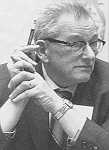 Campbell: "In essence, science fiction consists
of stories about human adventures anywhere and anywhen, anytime and any place,
not just on this earth, and not just in the present. You come down to it and
what they call mainstream literature is actually a subdivision of science
fiction because it deals with only here and now; a very narrow part of the
total field of human experience."
Campbell: "In essence, science fiction consists
of stories about human adventures anywhere and anywhen, anytime and any place,
not just on this earth, and not just in the present. You come down to it and
what they call mainstream literature is actually a subdivision of science
fiction because it deals with only here and now; a very narrow part of the
total field of human experience."
"That's what science fiction is: stories of other times and other places. The implications of what we are doing today on the future and a study of the past and what implications it had in today's world. Homer's Odyssey was a form of science fiction that was exploring strange worlds...science fiction has a broader sweep, a greater field. It's a more open mind. It is not limited to the narrow, conventional, little petty suburban ideas. It's got more of the sweep of the old sagas; more of the space and room to roam and to think that the old stories had--the stories that had been the literature of the world, not just of one place and one time."
The interviewer asked: "How would you differentiate between science fiction and science fantasy?"
Campbell: "That's a little more difficult distinction to make. The best way I can define it , I think, is this: in a true science fiction story the author introduces one new postulate and from there on the rules of the game require that he develop a consistent story, consistent with the known facts of science. He is limited by the disciplines of known facts. In a fantasy story, anything goes. There are no limitations. A fantasy is like a dream. Anything can happen. A science fiction story is an effort to extrapolate from the way things are going now, it appears that things will be and thus and so. Typically, science fiction back in the early 30's was discussing rocket ships, atomic power, things like that. At that time that was called fantasy, but it wasn't fantasy. It was science fiction. It wasn't fantasy because this was no baseless dream. This was a projection of what was probably going to happen."
WNDT-TV 1966
A discussion program on the literary aspects of science fiction was broadcast on WNDT-TV in the New York City area on 6-30-66. Guests were A. E. Van Vogt, Theodore Sturgeon, Anthony Boucher and Bruce Franklin. Dr. Paul Salkman was moderator. Here are a few excerpts from that program.
Bruce Franklin began with a statement about science fiction: " I think the simplest definition and most useful is that science fiction is simply that kind of fiction that extrapolates from the actual to the possible. It's a fiction of possibilities different from realistic fiction, which deals with actualities, and fantasy, which deals with impossibilities."
Theodore Sturgeon: "To me it is telling a story of humanly understandable problems and giving them a humanly understandable solution. Now, this makes it fiction, but casting the whole thing in a narrative, which could not occur without the science aspect--and to me that is what science fiction is. You would be absolutely amazed at how many people enjoy this, many of them who wouldn't be seen dead reading a science fiction magazine because by and large the public seems to be able to enjoy science fiction as long as it isn't called science fiction.
A. E. Van Vogt: "Well, definitions come afterwards for me. The discovery that there was such a thing as geologic time, the discovery that things had scientific meanings, which I found out when I read certain types of popularized versions of science in my teens and so on. These enlarged my horizon very considerably, and then I ran into science fiction that expanded it, so enormously that presently I became fascinated by all ages of life through the world of science fiction. And presently, one day I was motivated to write a science fiction story myself. Afterwards, I could look back and say, "Well, the reason for this is that such and such, and such and such, and you can define science fiction this way." Science fiction was an enlargement of the universe that I lived in prior to discovering it.
Anthony Boucher: "Van, I think you're very right in using that word expansion and I think it's in this expanding element in science fiction that the form can offer the creative writer something that mainstream fiction does not--the ability to take the reader with him, expanding the reader's own concepts and understanding either into the vast realms of space that we have not touched, or, perhaps more importantly, as Ted Sturgeon has done in many of his best stories, into yet more unplumbed depths of space in the interior of the reader himself."
"I do not think this distinction of where one draws the line between science fiction and fantasy is at all valuable. I know since I long published a magazine, which contained both, and readers and critics were never able to agree between which stories were which within the magazine. There's a spectrum, an enormous spectrum and at one end of the spectrum you have some very hard core science fiction like the work of Hal Clement, for instance that is unarguable. At another end you will have some perfectly unarguable hard core fantasy such as the stories that all of us used to write for Unknown. At in between you have a lot of stories in which this matter of definition is not at all important. What is important is what they are trying to say, and in this respect I think it should be noted, as Dr. Franklin stresses so much in his anthology, that although the science fiction writer in any era usually pretends to be writing about the future, He is almost always writing about his own time and using this future method as a manner of casting light on his own time in a way that realistic fiction would not permit."
|
So it seems the attempt to distinguish between science fiction and fantasy is not always clear. Sometimes the territory doesn't fit the map. With this information from a few experts, perhaps you can form your own opinion. |
![]()
I was an avid reader and had a library card, even in grade school. Before age 11, I had read many books including Zane Grey and Jack London. My mother had also bought for me many of the Freddy books by Walter R. Brooks that were very well done. Then I read Twenty Thousand Leagues Under the Sea, Mysterious Island, Journey to the Center of the Earth and Their Island Home by Jules Verne.
|
|
|
|
I think that started my preference for science fiction. Also, I listened to radio programs like X-1, Dimension X, Suspense, Quiet Please, Inner Sanctum, The Mysterious Traveler and Escape. I started my subscription to what was then called Astounding Science Fiction Magazine edited by John Campbell, Jr. The first book I bought was in 1947 and was titled Rocket Ship Galileo by Robert Heinlein. I liked this so much I bought two more of his books, Space Cadet and Red Planet. Since then my collection of mostly paperbacks grew to what is now over 1000 science fiction novels, short story anthologies and magazines.
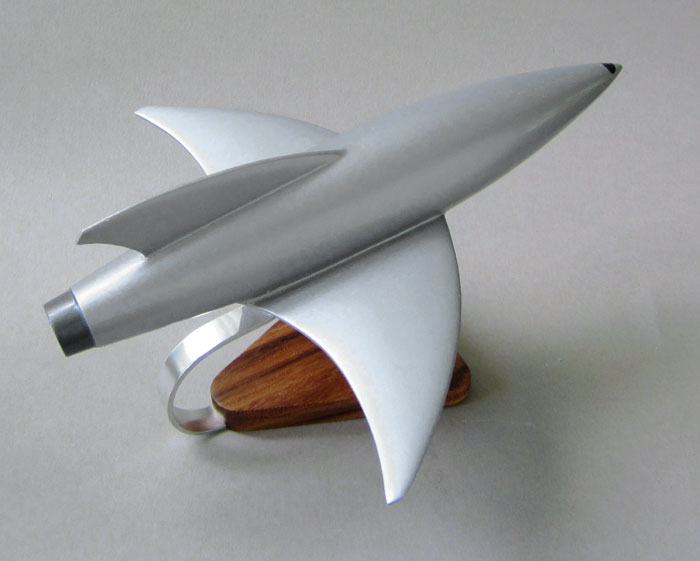
I recently acquired this model of the Galileo rocket ship.

It is made from mahogany wood. Hand-carved and hand-painted. It is about 10-1/2 inches long by 9 inches wide.
In my early high school years I was fascinated by the pictures of UFO's that were published in magazines such as Look. I believed these were real pictures of actual alien craft that were seen and photographed by people. It was very frustrating, though, because the pictures always seemed to be out of focus or very grainy from being greatly enlarged. I didn't know, back then, that I was trying so hard to get a closer glimpse of things like hubcaps or garbage can covers.
About 1963 I started collecting old radio programs on tape and in particular science fiction programs. Through Tape Recording magazine, I met other collectors and swapped for many more.
![]()
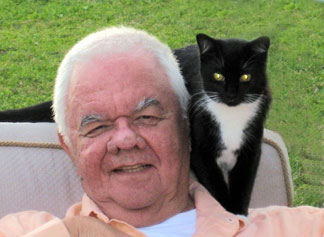
Everyone needs a familiar.
Reminiscent of the movie “Bell, Book and Candle.”
If you were to ask, from the many stories that I have read, what is my favorite science fiction story, I could not pick just one. One author may have only one story I like, whereas all the works of another author may be very appealing. To further complicate things, I find if I read the same story at a later time in my life, I might change my opinion. Even though I have read many books and magazines over the years, there are many thousands more that I haven't read. Here are a few of my favorites.
|
Robert Adams |
Stairway to Forever- (Adams passed away after completing only two books in this series. A third book, Guideposts to Danger, was never completed although the title and ISBN #067169829x were assigned. Hard cover publisher was to be BAEN Books 8/89 and paperback was to be Pocket Books MM 6/90.) |
|
Brian Aldiss |
The Long Afternoon of Earth |
|
J. G. Ballard |
The Wind From Nowhere, The Drowned World, The Crystal World, The Burning World, The Unlimited Dream Company. All other stories in general. |
|
Stephen Baxter |
The Time Ships |
|
Arthur Clarke |
Rendezvous With Rama, Rama II, The Garden of Rama, Rama Revealed, 2001 |
|
Hal Clement |
Needle |
|
Stephen Donaldson |
The Chronicles of Thomas Covenant series, The Gap series and all stories in general. |
|
Philip Jose Farmer |
Riverworld series, Dayworld series, World of Tiers series and all stories in general. |
|
Raymond Gallun |
The Eden Cycle |
|
Harry Harrison |
Deathworld, Stainless Steel Rat, Bill, the Galactic Hero and all stories in general. |
|
Larry Niven |
The Ringworld series, Man-Kzin Wars and all stories in general. |
|
Robert Silverberg |
The World Inside, To Live Again |
|
E. E. "doc" Smith |
The Skylark and Lensman series |
|
William Sleator |
House of Stairs |
|
George Stewart |
Earth Abides |
|
Jules Verne |
Twenty Thousand Leagues Under the Sea, Journey to the Center of the Earth, Mysterious Island and all stories in general. |
|
A. E. Van Vogt |
The Null -A series, The Mixed Men, Weapon Shops, Slan and all stories in general. |
|
H. G. Wells |
The War of the Worlds, The Time Machine, The Invisible Man and all stories in general. |
|
John Wyndham |
Revolt of the Triffids |
Favorite Movies
Here's a list of movies that impressed me for effects, quality, story and subject matter or were just plain fun to watch.
|
2001: A Space Odyssey 1968 |
Planet of the Apes 1968 |
|
Forbidden Planet 1956 |
Them 1954 |
![]()
(1973) A French/Czechoslovakian animated feature directed by Rene Laloux that received the Grand Prix award at Cannes. Roland Topor created images that were not only refreshingly different but they were also very imaginative art and very well done. The film was not only entertaining, but also but had a good story. The sound track was also unique. Even the text was fascinating, with many words that my spelling checker didn't recognize; or my dictionary either for that matter. My spelling may not be right, as it is.
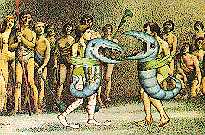 "Our planet Yon possesses a single satellite,
fantastic planet. We utilize this uninhabited planet for meditation. Yon is
divided onto several ouvas. Two of the ouvas, Strohm and Yaht are natural and
symmetrical. Among the other ouvas are Tana, the largest. It is completely
covered by blue isconic masses, which cause extreme temperature variations from
8 to 243 leicas, and is therefore inaccessible to riprocal exploitation. The
ouva of Goham is dominated by an inland secular sea, which stabilizes the
ipanic above 25 leicas. Anchor blocks counteract the process of pontiprobation
while omalean globes regulize the pressure. All ouvas undergo a cycle of 3
vesicular seasons of uneven duration. The season of garine crystallization,
that of the...Consequently, the topography is regularly modified in all
non-inhabited areas. The vesicular cliffs bordering some portions of the
secular sea are eroded by torrential rains."
"Our planet Yon possesses a single satellite,
fantastic planet. We utilize this uninhabited planet for meditation. Yon is
divided onto several ouvas. Two of the ouvas, Strohm and Yaht are natural and
symmetrical. Among the other ouvas are Tana, the largest. It is completely
covered by blue isconic masses, which cause extreme temperature variations from
8 to 243 leicas, and is therefore inaccessible to riprocal exploitation. The
ouva of Goham is dominated by an inland secular sea, which stabilizes the
ipanic above 25 leicas. Anchor blocks counteract the process of pontiprobation
while omalean globes regulize the pressure. All ouvas undergo a cycle of 3
vesicular seasons of uneven duration. The season of garine crystallization,
that of the...Consequently, the topography is regularly modified in all
non-inhabited areas. The vesicular cliffs bordering some portions of the
secular sea are eroded by torrential rains."
![]()
This interesting conversation with the Martian and Tomas was quite different in the movie compared to the book. The movie appears to reflect the quest for the meaning of life with a hint of eastern philosophy and conservation. In the movie, after neither of them can see what the other sees, or even touch each other, it goes as follows:
"What does it matter anyway," said
the Martian. "Of what importance is it who is past and who is future. What
follows will follow, now, or in 10,000 years. All that matters is you see your
world and I see mine. Is that not enough; no matter what we each believe?"
"Of
course," said Tomas.
"You
look despondent."
"I
guess I am." Tomas said
"Why?"
"Because I had hoped."
"For
what?"
"For
this meeting," said Tomas. "such a long time to learn."
"To
learn?
" "Yes, about
your people, your beliefs, the secret of your life on mars."
"Of
Tier." corrected the Martian
"Tier?" said Tomas
"This
is the planet Tier."
"Oh,
y.., yes, Tier."
"Secret?" said the Martian. "There is no secret. Anyone with
eyes can see the way to live."
"How?"
"By
watching life," said the Martian. "Observing nature and cooperating
with it; making common cause with the process of existence."
"How?"
"By
living life for itself, don't you see? Deriving pleasure from the gift of pure
being."
"The
gift of pure being?" Tomas said
"Life
is it's own answer. Accept it and enjoy it day by day. Live as well as
possible. Expect no more. Destroy nothing. Humble nothing. Look for fault in
nothing. Leave unsallied and untouched all that is beautiful. Hold that which
lives in all reverence, for life is given by the sovereign of our universe.
Given to be savored, to be luxuriated in, to be respected. But that's no
secret. You're intelligent. You know as well as I what has to be done. Now I
must go. My people are waiting for me."
"I have
people waiting, too."
"Good.
Perhaps we'll meet again some other night."
"I
would like that carnival of yours."
"And I
would like to see the things you see. Good night my friend."
"Good-bye," said Tomas
![]()
|
Raymond F. Jones (1915-1994) wrote This Island Earth. The novel was published in 1952 by Shasta publishers of Chicago. The novel was based on three novelettes published in Thrilling Wonder Stories. The first one was titled The Alien Machine in the June 1949 issue. The second was The Shroud of Secrecy in the December 1949 issue and the third was The Greater Conflict in the February 1950 issue. Needless to say, the movie was very different from the published material. Raymond F. Jones wrote over 75 stories between 1941 and 1978. These were mostly short fiction. |
![]()
![]()
I really enjoy time travel stories like the HG Wells Time Machine and Stephen Baxter's The Time Ships, but what if this was taken literally. If we were to travel back or forward in time, even for one second, we would find ourselves out in space. At any given time we're traveling in a very specific direction with a very definite magnitude of force acting on us which could be called the prime vector. The prime vector is the vector sum of all the forces and their directions that are acting on us. For example: At the equator, we are going around the earth at 1038 mph. At my latitude in Florida, it is 1038 times the cosine of the latitude or 912 mph (0.23 miles per second). Then we are going around the sun at 18.5 miles per second, and our galaxy is travelling at 372 miles per second, etc. The prime vector is constantly changing as the earth rotates and as it goes around the sun, etc. Traveling only in time would then leave us stranded in space, or possibly inside the earth.
After traveling only in time, it would require traveling in space to get to the desired location in the new time. If earth were our target, we would literally have to travel to where the earth was or will be. The further we travel in time, of course, the further we have to travel in space to get to the earth. It becomes painfully obvious that time traveling for any significant amount of time leaves us a very long way from the earth. In fact, it may be so far that it would take a lifetime or more to get there. Faster-than-light travel is also needed.
Time-Space Travel
Conveniently, the rules in science fiction time travel have been based on the assumption that if we travel in time, we must automatically travel to the correct space at the new time. But, what is the correct space? If we were traveling back in time-space, would we go back to the space we were occupying at that earlier time when we were younger, or would we go back to the space equivalent to what we're occupying now?
To follow this thinking further, we conveniently seem to arrive at a time when other objects are not occupying the same space as our target space. However, there is the air that occupies that space. Is this a minor problem? It could be a major problem for us if we get the time travelers "bends" or something. Perhaps it would be safer to depart and arrive in space close to the Earth and then land where we wanted.
What about inertia? When we arrive at our destination, do we need to consider our inertia from where we were? Perhaps, at the moment we arrive, we might go off at the speed and direction we were headed before we left. There's also the need for instant transfer. If all of our atoms don't leave and arrive at exactly the same time, we could be smeared across many miles. Perhaps these are all trivial details, but believability is important. Science fiction is, after all, based on science fact.
Another Approach
In theory, faster-than-light travel would allow us to travel back in time. However, according to Einstein, faster than light travel is not possible. As we approach the speed of light, mass and gravity, approach infinity and we would be crushed. This brute force method doesn't work.
I have always felt there must be ways around this and yet still be in accordance with natural laws. Recent discoveries, such as wormholes, could be a solution. Wormholes are known to exist in the sub-atomic world. This could allow instant travel from one place to another giving the appearance of having traveled faster than light and perhaps without any bad side effects. The idea isn't far removed from Gilbert Gosseyn's ability to instantly similarize himself to different parts of the galaxy in A. E. Van Vogt's story The Players of A written in 1948.
A time paradox is created by the changes that take place if you time-space travel. I wouldn't even think of going to the past and killing my grandfather as some people might suggest. Just simply going to the past and unintentionally causing what might seem like minor changes or inadvertently carrying a virus could cause catastrophic results. A new virus has had devastating results to other civilizations when brought in from outsiders. Therefore, you have altered the future where you came from and cannot return to your original future.
Not only could you alter your present world by going to the past and causing changes, but you can also alter the future of the present world just by leaving it. A way out of this paradox is the idea of parallel universes. Perhaps a quantum leap is caused when you time travel and you are actually traveling to another universe where the events happened as you have caused them. Perhaps there are an infinite number of parallel universes. Travel to parallel universes has been used by many science fiction authors. including Arthur Clarke in Rama Revealed and Stephen Baxter's The time Ships.
Recommended reading is Parallel Worlds by Michiu Kaku.
![]()
A few books in my collection are very old
|
|
|
|
|
|
I
read this story in the 1940’s. Many years later I found this one at a flea
market and was surprised to find this note inside dated 1881.
![]()
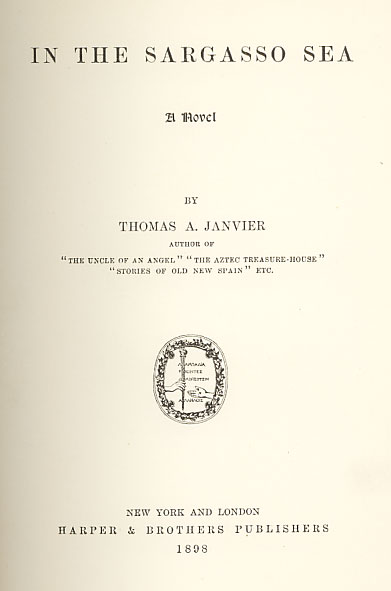
I first read this story in high school and I was very fortunate to have recently found a copy. As far as I know, it was never reprinted but is now available to download from amazon.com. The original publication was in 1898, more than 100 years ago. It was very enjoyable to read this again and very interesting to notice the older style of writing. The story itself was also fascinating and is as good today as it was back then.
![]()
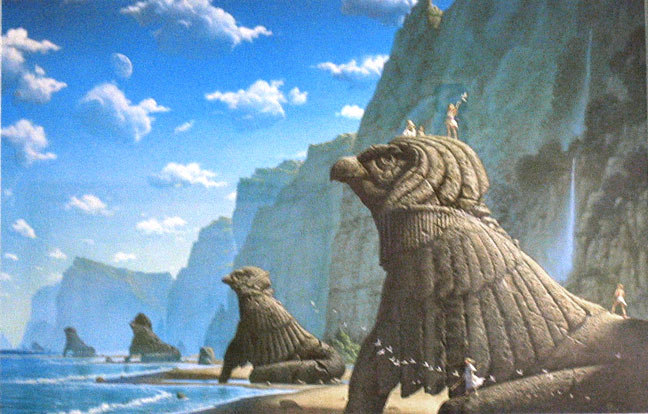
This artwork is by Michael Whelan titled “Sentinels.” It is from 1993 and only 950 of these prints were made from the original 20-1/2” X 31-3/8” acrylic painting. I couldn’t resist acquiring one of these prints.
![]()
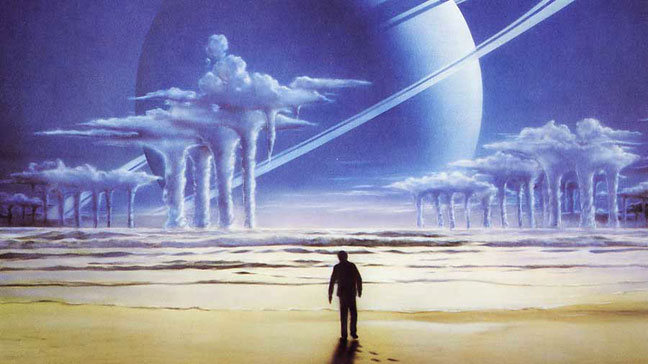
This scene was shown at the end of the movie The Quiet earth
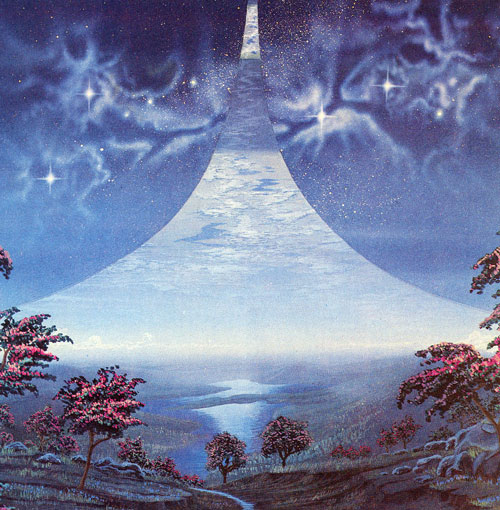
The Ringworld series was one of the most famous stories by Larry Niven. Here is an artist’s concept of it might have looked like.
![]()
Missing Story Found
Back in the mid to late 1950s, I read a science fiction story and to this day I cannot find it. I thought I had remembered the name as The land of the Lens. I thought I had found it but a story with that name is entirely different from what I remember and that story involved some of it taking place on the moon.
The story I remember is about a scientist who discovers in an archeological dig an unusual object badly corroded and shaped something like a looking glass. Through reverse electro-plating or some such process, he was able to restore the looking glass. He found that he could see through it into another world. This world was something like ancient Egypt with people and something called Rhouks. Eventually due to his spying, his portal opening could be seen by those in the other world. They brought out a large but similar looking device on wheels and dumped him into their universe. That is all I remember.
This may have been a short story in a magazine like Amazing or Astounding. It could also have been in a collection of short stories or a novel. I have gone through my collection of paperbacks, hard covers and Astounding and found nothing with a similar title. I have about 1500 SF books and magazines.
Anyone remember such a story with that beginning? Well, thanks to a reader of my page, he identified the story and the book. It looks like I did not remember the title close enough but I do have the book in my library. The story was The Other World by Murray Leinster and was originally published in 1949. It later became part of a collection edited by Groff Conklin titled 6 Great Short Stories of Science Fiction published in 1954 and that is when I bought it. It is an excellent story and is just as interesting as it was back then. The science is good also.
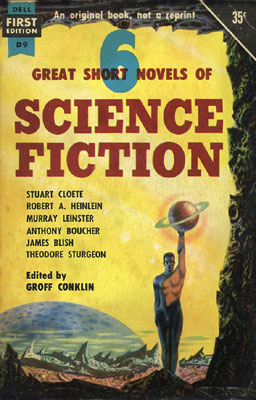
|
|
|
Links to Other Interesting SF sites |
|
|
A complete list of his works, pictures and other interesting related items. |
|
|
|
Outstanding space art prints framed or unframed. Many signed by the original artist. I have purchased several over the years. |
|
|
|
If you like science fiction, check out this page. It has very useful up-to-date news and information. |
|
|
|
|
Created
by Roger Russell |
|
Are you ready to similarize yourself back to my main page? Be certain you have memorized your previous location to twenty decimal places within the last 26 hours. |
